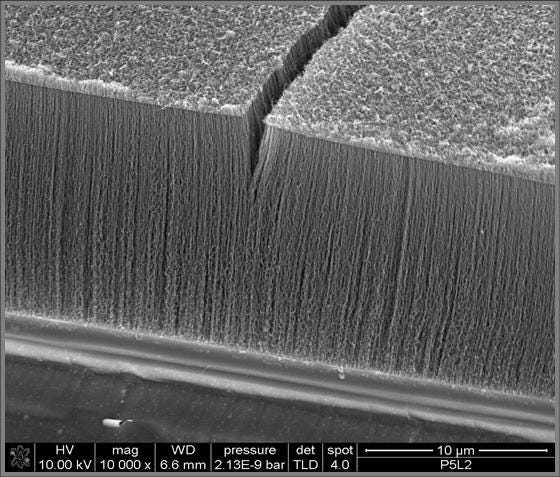
Carbon nanotubes are tubes made from carbon having very thin walls which are usually measured in nanometres (SWCNTs). Vertically aligned carbon nanotubes, also known as vertically aligned carbon nanotube arrays (VANTAs) has been developed as unique microstructures which consist of a number of nanotubes made of carbon that are arranged or oriented along their longitudinal axis normal to the surface of a given substrate.
Why use vertically aligned carbon nanotubes
With the world registering a progress at a rapid rate, new technologies and inventions are seeing the light of reality. The carbon nanotubes which are vertically aligned have found widespread uses in current and potential device applications. These nanotubes are arranged in a particular orientation using various methods which include-
- Growth mechanism
- Catalyst
- Support
- Carbon source
- Temperature
- Flow assisted growth
- Field-assisted growth
- Individually addressable nanostructures and various other methods.
Carbon nanotubes- why are they vertically aligned?
The vertical alignment of the carbon nanotubes have been found to be effective in preserving the unique anisotropic characteristics of the individual carbon nanotubes in the array. They have also been found to retain within themselves a morphology that can be controlled in a precise manner. Vertically aligned carbon nanotubes can be achieved using a handful of techniques that rely on various mechanisms. These mechanisms can be categorized as-
- In-situ techniques
- Ex-situ techniques
In the in-situ methods, the alignments are achieved while the carbon nanotubes are still under growth. The ex-situ methods involve alignment at a later stage such as during device integration.
Carbon nanotubes are found in various alignments of which the vertical arrangement has gained significant popularity. The vertically arranged carbon nanotubes have found their applications in a number of devices including field-emission devices, blackbody absorbers, carbon fire ropes, unidirectional sheets, adhesive films, gas sensor, biological sensors, thermal interface materials, solar cells and transistors.




No comments:
Post a Comment